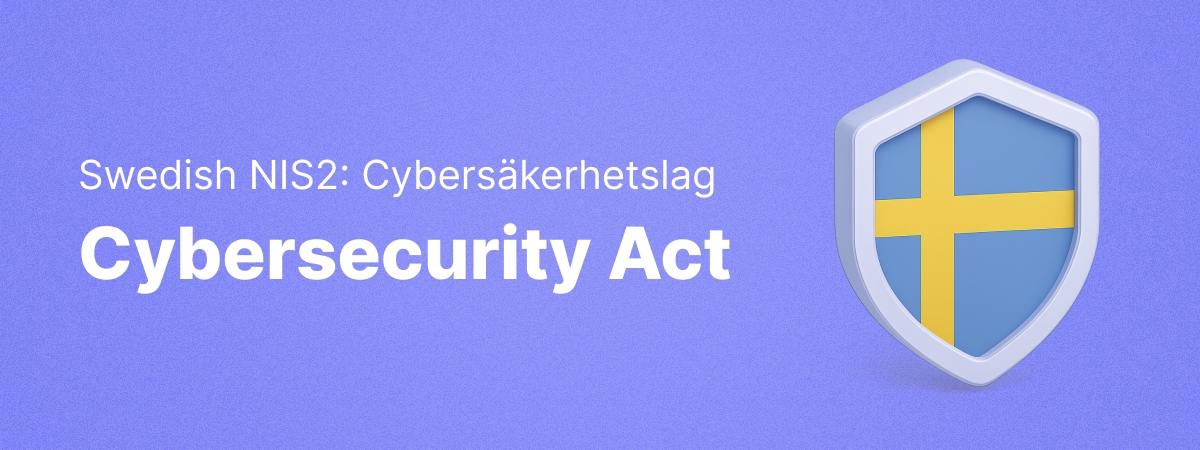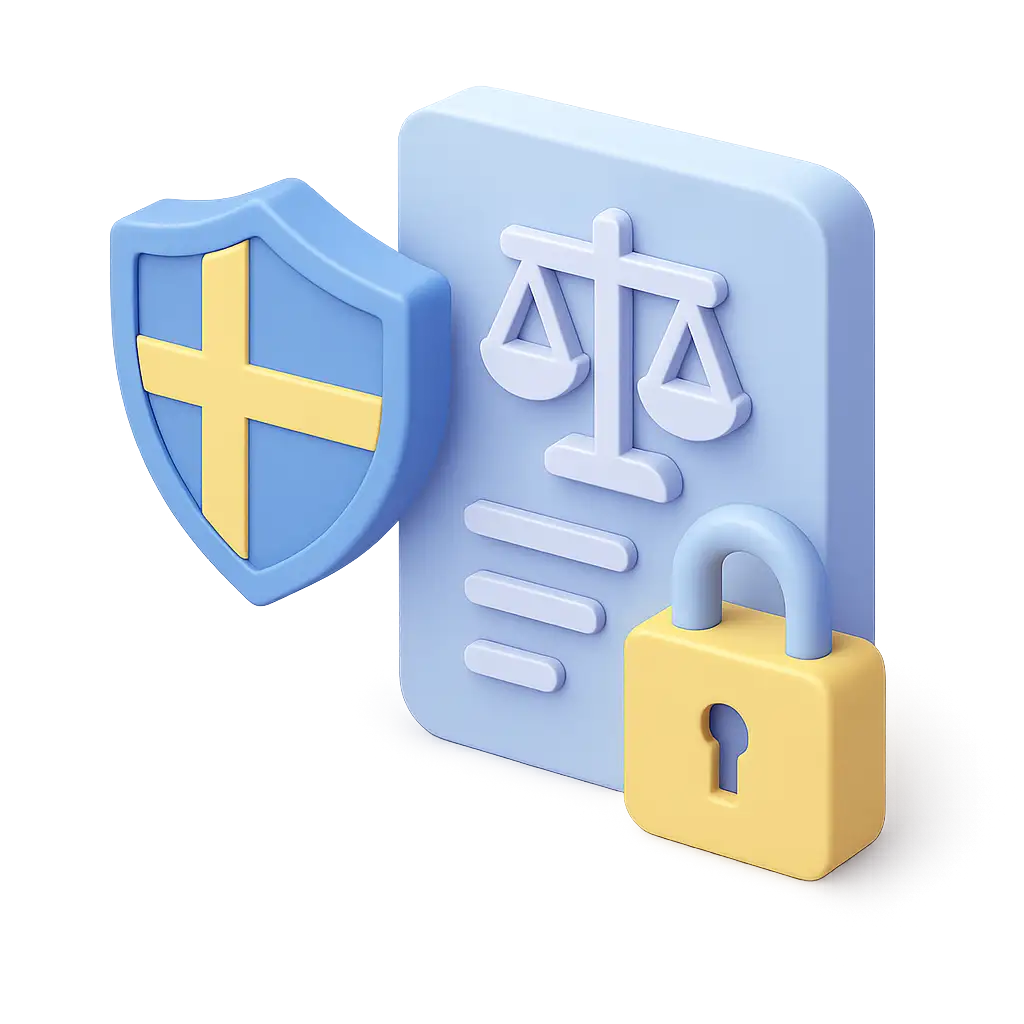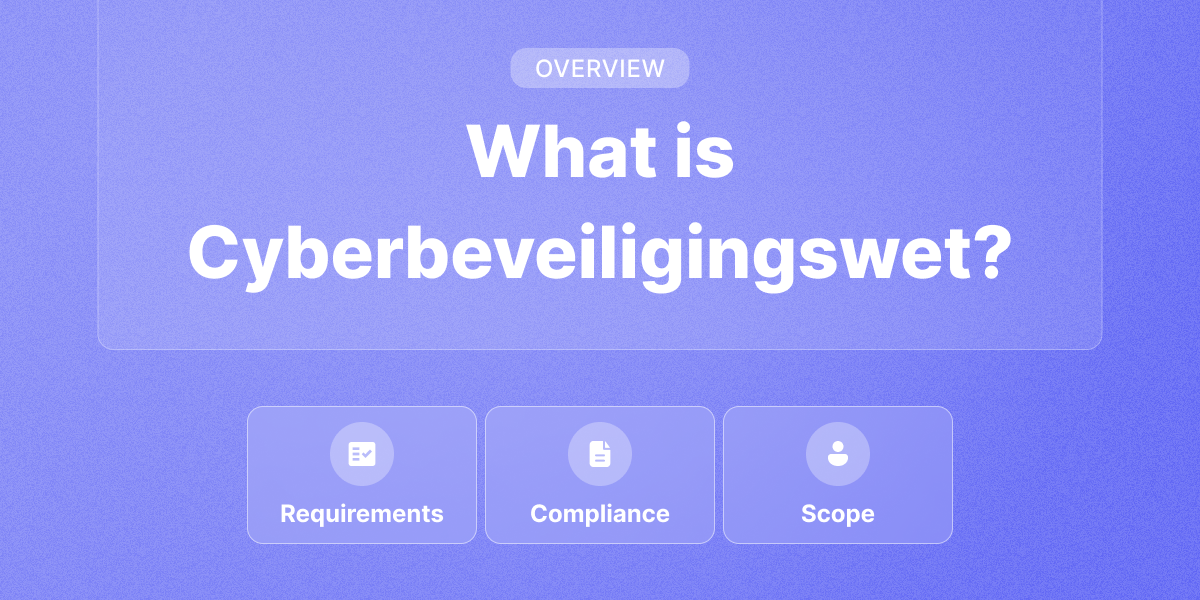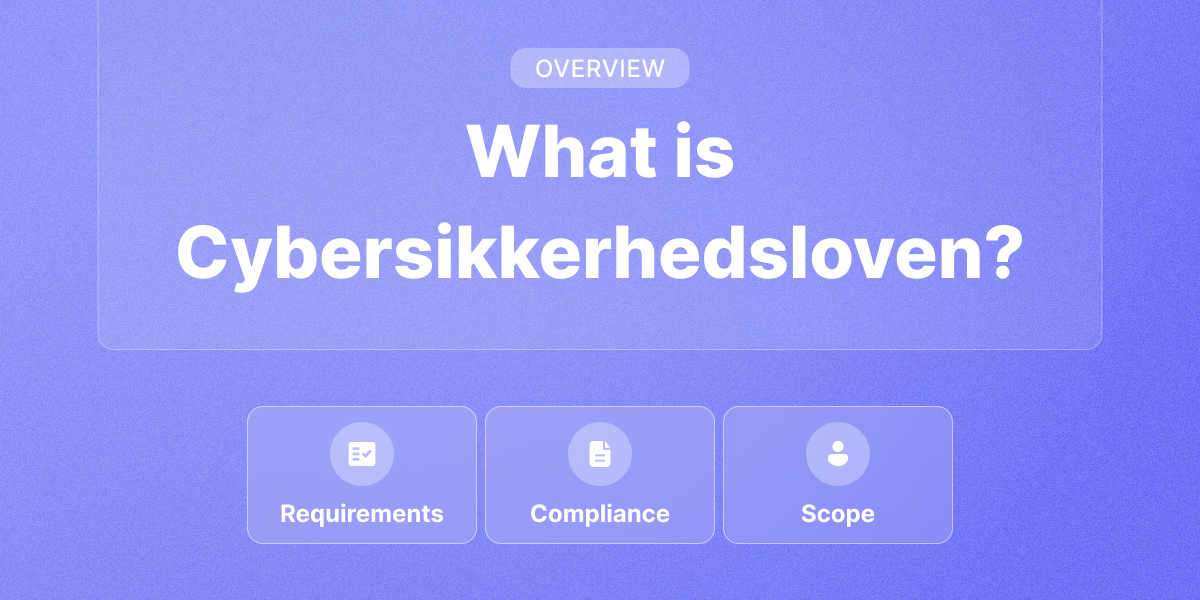
Cybersäkerhetslagen, or the Cybersecurity Act in English, is the national implementation of the EU's NIS2 Directive, aiming to enhance cybersecurity across critical sectors. It applies to both public and private entities in Sweden, expanding the scope from the previous "Lag (2018:1174) om informationssäkerhet för samhällsviktiga och digitala tjänster" (Swedish NIS 1 Act) to include more sectors and stricter requirements.
This new law is expected to come into effect by the end of 2025.
What does the Swedish NIS2 require?
The Cybersäkerhetslagen introduces comprehensive obligations for organizations operating in critical sectors. These requirements aim to improve the overall cybersecurity posture across Sweden.
Key obligations are expected to include:
- Self-identification and registration: Organizations must determine if they fall within the scope of the Act and register with the appropriate supervisory authority.
- Systematic information security management: Entities are required to establish and maintain a systematic and risk-based approach to information security, including regular risk assessments and implementation of appropriate security measures.
- Management accountability and training: Senior management must be actively involved in cybersecurity efforts and ensure that both leadership and staff receive adequate training.
- Incident reporting: Significant cybersecurity incidents must be reported to the Swedish Civil Contingencies Agency (MSB) within specified timeframes.
- Compliance with supervisory authorities: Organizations are subject to oversight by designated supervisory authorities, which may issue specific regulations and conduct inspections to ensure compliance.
These measures are designed to foster a proactive cybersecurity culture, ensuring that organizations are better prepared to prevent, detect, and respond to cyber threats.
Read more: What does Cybersäkerhetslagen require?
How does the Swedish Cybersäkerhetslagen differ from the earlier NIS Act?
The Swedish NIS2 Cybersecurity Act builds upon and replaces the earlier Swedish NIS Act (2018:1174), which was the national implementation of the first EU NIS Directive. While the 2018 act laid the foundation for regulating cybersecurity in essential services and digital service providers, the new legislation significantly expands the scope and strengthens requirements.
Key differences include:
- Broader scope: The original NIS Act applied only to a limited set of 7 sectors deemed essential (like energy and healthcare) and certain digital service providers. The new act (NIS2 implementation) extends coverage to 18 sectors and introduces a new category of “important entities” alongside “essential entities,” pulling more organizations under regulation.
- Stricter requirements: The 2018 law had limited prescriptive controls. The new law introduces detailed cybersecurity measures, including supply chain risk management, mandatory training for management, and clearer governance requirements.
- Incident reporting: While both laws required reporting, the Swedish Cybersecurity Act enforces tighter deadlines and introduces structured multi-step reporting (initial, follow-up, and final reports).
- Enforcement and penalties: The new act gives authorities more oversight power and the ability to issue significant administrative fines for non-compliance. The previous act had less robust enforcement mechanisms.
- Supervision model: NIS2 introduces more coordinated EU-level supervision, whereas the 2018 law relied heavily on national interpretation and fragmented enforcement.
In short, the Swedish Cybersecurity Act is a complete overhaul of the original NIS framework with stricter, broader, and more enforceable rules to better match the current threat landscape.
What are the benefits of the Cybersäkerhetslagen?
Following the Swedish NIS2 implementation is mandatory, but it also offers practical benefits:
- Improved security posture: Organizations reduce exposure to cyber threats through structured controls.
- Enhanced incident response: Standardized procedures limit the impact of cyber incidents.
- Better vendor management: Increased visibility and control over third-party risks.
- Increased trust: Compliance boosts credibility with customers and regulators.
- Regulatory alignment: Ensures adherence to EU-wide cybersecurity standards.

How long does it take to get Cybersäkerhetslagen compliant?
The timeline for compliance varies depending on factors such as current maturity and resources. Based on other EU countries’ NIS2 implementations, compliance is expected to take 4–12 months, depending on cybersecurity maturity and resources.
- Starting from scratch: Full compliance may take 9–12 months, including policy development and training.
- Partially compliant: Achieving compliance might take 4–6 months if existing practices align partially.
- Already compliant with similar frameworks: Compliance could be quicker, focusing on specific adjustments.
Tools like Cyberday can streamline the process by providing guidance and resources.
Read more: How to comply with Cybersäkerhetslagen?
FAQs
Is the Swedish Cybersecurity Act mandatory?
Yes, it is a binding law for entities within its scope.
Why is the Swedish Cybersecurity Act important?
It strengthens national cybersecurity by enforcing risk management, incident reporting, and accountability, aligning with EU-wide efforts to protect critical infrastructure.
Who needs to comply with the Swedish Cybersecurity Act?
Public and private entities in specified sectors, including energy, transport, healthcare, digital infrastructure, and more, especially those meeting size thresholds or providing essential services.
When is the Swedish Cybersecurity Act in effect?
The Act is expected to enter into force in Sweden by the end of 2025.
Is the Swedish Cybersecurity Act supported in Cyberday?
Yes, we support the Swedish NIS2 version in Cyberday. Our implementation is based on the latest public drafts of the upcoming regulation.
Start preparing today
Use Cyberday’s NIS2 implementation tools to get ahead. Start your 14-day free trial today.

.svg)
























